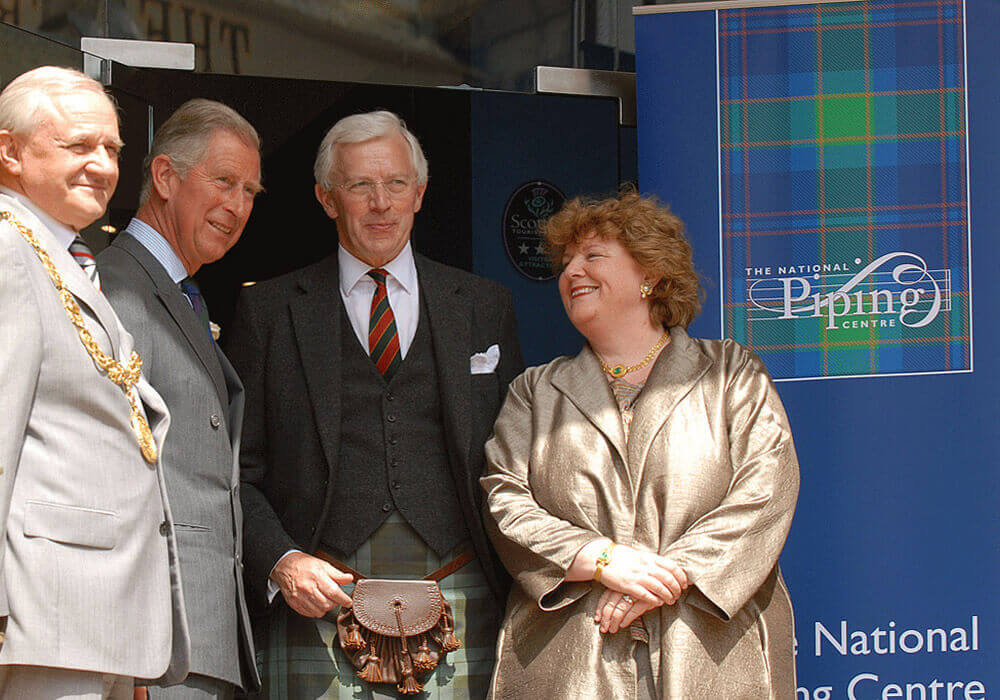Stained Glass
Overview of the windows
The Windows – Behind the Glass
A Pibroch or Piobaireachd also known as Ceol-Mor is a classical form of bagpipe music unique to Scotland.
These special windows can be found above the main entrance to The National Piping Centre. This work was commissioned by The National Piping Centre to accentuate its commitment to the classical form of bagpipe music called Piobaireachd, pronounced Pibroch. It is based specifically on the oral form called Canntaireachd which was used before music was written down as a way of preserving and passing on both the melody and fingering of tunes. It is made up of vocables, which have no meaning as words but express the music when sung. There are standardised forms of Canntaireachd, one of which is used here but pipers often have their own system.
The purpose of these windows is to give an indication of the formal yet poetic nature of Piobaireachd and to illustrate the complexity and multi-layered quality of this music.
There are three windows describing three different Piobaireachds. The design for the windows are based on a proportional grid. Into this grid is written part of a Canntaireachd starting from the beginning. The use of the continuous base colour of blue from which the themes seem to materialise and then fade is reminiscent of the melody of the chanter arising from the background sound created by the drones.
The imagery used in the windows reflects the different types of Piobaireachd; the Salute, Lament and March. Also included are elements which are suggested by the titles of the music and elements which have a special resonance in Scottish history.
The stained glass windows were designed by John K Clark. More information and photographs of this project can be found on John’s website at: www.glasspainter.com/piping
 Window 1
Window 1
Piobaireachd – Glengarry’s March
This window contains a reference to a favourite tune and concept of the artist, the “Flowers of the forest”, in this instance bluebells. In other sections are oak, alder, apple, and rowan leaves, all of which have a special place in Scottish folklore. There is also the reflective quality of still water which carries a sense of lament.
 Window 2
Window 2
Piobaireachd – The Battle of Waternish
Refers to the military use in the history of Bagpipe music. The symbolism, Jacobites against the Union represented by; the Jacobite flag, a claymore and thistles, the first Union flag, a broadsword and a rose. The “fiery cross”, used as a signal to summon the clans. The Saltire seen as a cloud formation.
 Window 3
Window 3
Piobaireachd – The Sound of the Waves against the Castle of Duntroon
Mostly a seascape which refers to the sound of the waves, specifically bringing to mind the Piobaireachd. It also has sections alluding to fishing, seabirds and small glimpses of the Scottish landscape.












